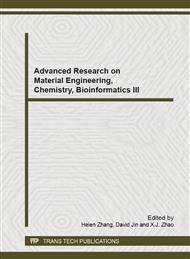p.455
p.459
p.463
p.469
p.473
p.477
p.481
p.485
p.490
Biochar from Sewage Sludge: Preparation, Characterization and Ammonia-Phosphorus Capture
Abstract:
Sewage sludge was pyrolyzed in order to assess the effect of pyrolysis temperature on the yield of biochar production and its characteristics. The pyrolysis temperature was a key factor affecting biochar yield, while the highest yield was obtained at a temperature of 400 °C. Biochar surface area increased with increasing pyrolysis temperature and was maximized (8.4 m2/g),which was beneficial for capturing ammonia and phosphate in aqueous solution. Biochar removed 48.3-82.2% of ammonia at equilibrium time, whereas 35.4 to 69.6% was adsorbed onto biochar surface, implying that biochar is more efficient in removing cations than anions from aqueous solutions.
Info:
Periodical:
Pages:
473-476
Citation:
Online since:
October 2013
Authors:
Keywords:
Price:
Сopyright:
© 2014 Trans Tech Publications Ltd. All Rights Reserved
Share:
Citation:


